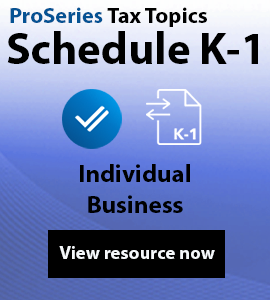- Topics
- Training
- Community
- Product Help
- Industry Discussions
- User Groups
- Discover
- Resources
- Intuit Accountants Community
- :
- ProSeries Tax
- :
- ProSeries Tax Discussions
- :
- Re: Income Exclusion Under Tax Treaty in US Resident 1040 ITRs
Income Exclusion Under Tax Treaty in US Resident 1040 ITRs
- Mark Topic as New
- Mark Topic as Read
- Float this Topic for Current User
- Bookmark
- Subscribe
- Printer Friendly Page
- Mark as New
- Bookmark
- Subscribe
- Permalink
- Report Inappropriate Content
Income Exclusion Under Tax Treaty in US Resident 1040 ITRs
April 1, 2025
Pro Series Professional Help Desk tried its best to answer where to input in the tax software a foreign e.g. Pension Income from India, exempt under the US India Treaty as stipulated in the US India Treaty Convention.
“TAX CONVENTION WITH THE REPUBLIC OF INDIA GENERAL EFFECTIVE DATE UNDER ARTICLE 30: 1 JANUARY 1991” (https://www.irs.gov/pub/irs-trty/india.pdf), pension received by a US Resident TP is to be excluded from ‘net foreign source taxable income’ under ARTICLE 20.2 therein, which reads as follows
ARTICLE 20
Private Pensions, Annuities, Alimony and Child Support
- Any pension, other than a pension referred to in Article 19 (Remuneration and Pensions in Respect of Government Service), or any annuity derived by a resident of a Contracting State from sources within the other Contracting State may be taxed only in the first-mentioned Contracting State.
- Notwithstanding paragraph 1, and subject to the provisions of Article 19 (Remuneration and Pensions in Respect of Government Service), social security benefits and other public pensions paid by a Contracting State to a resident of the other Contracting State or a citizen of the United States shall be taxable only in the first-mentioned State.
In the Pro Series Professional e.g. Social Security Benefits W/S provides a “check box” to exclude SS Benefits exclusion for Canada and few other countries. Something similar should be what I was unable to find myself or with the help of Pro Series Professional Pro for India pension income.
Another example for similar feature to exclude treaty income is in 1040-NR Sch OI Item L 1.
Any pointer for India Pensions income in 1040-Resident would be very helpful.
Thanks.
Raj
Best Answer Click here
Accepted Solutions
- Mark as New
- Bookmark
- Subscribe
- Permalink
- Report Inappropriate Content
You basically have it correct.
On Schedule 1 of the 1040 - Other Income - list the foreign income items and the U.S. dollar amount. On the next line list US-INDIA TAX TREATY - ARTICLE XX EXEMPTION and then subtract out the proper amount. Some country exemptions are 100%, others are 10%, 90%, etc.
Then prepare Schedule OI to attach to the 1040 as a .pdf attachment (OTHER). On Line L(1) list each exemption with the amounts that match the 1040.
- Mark as New
- Bookmark
- Subscribe
- Permalink
- Report Inappropriate Content
You basically have it correct.
On Schedule 1 of the 1040 - Other Income - list the foreign income items and the U.S. dollar amount. On the next line list US-INDIA TAX TREATY - ARTICLE XX EXEMPTION and then subtract out the proper amount. Some country exemptions are 100%, others are 10%, 90%, etc.
Then prepare Schedule OI to attach to the 1040 as a .pdf attachment (OTHER). On Line L(1) list each exemption with the amounts that match the 1040.
- Mark as New
- Bookmark
- Subscribe
- Permalink
- Report Inappropriate Content
Thanks for your response. That confirms my understanding that on Resident 1040 side there is no separate and / or exclusive and / or dedicated way to exclude such treaty income similar to what the ProSeries provides for Social Security Benefits exclusion for Canada.
Yes, Sch 1 Other Income provides a work around solution which is a great suggestion by you. But I don't know whether we need to grab Sch OI from 1040-NR Item L and attach to Sch 1 of 1040 Resident. That is not only more work but may confuse the IRS seeing Sch OI of NR being sent with 1040 Resident.
But I accept what you have suggested is a very good solution and accept as Best Answer.
Thanks.
- Mark as New
- Bookmark
- Subscribe
- Permalink
- Report Inappropriate Content
That is a helpful add on. I looked up both at the IRS website and found Form 8833 which is luckily supported by Pro Series Professional. If I find more details, I will share them with you. I think Sch 1 Other Income with Form 8833 may be the way to go. Thanks.




